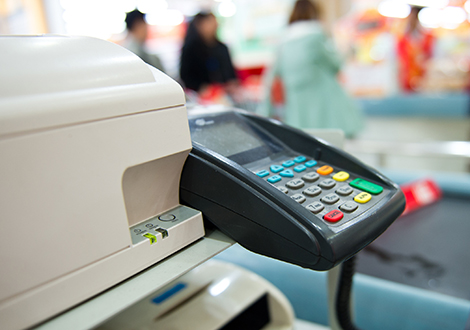As merchants consider updates to their point-of-sale systems this year, many—59%—want to add omnichannel capabilities, finds the 2020 POS/Customer Engagement Survey from Retail Consulting Partners.
Conducted in late 2019, the survey collected responses more than 50 North American retailers with annual revenue ranging from $100 million to more than $10 billion. Among other POS priorities are having a single commerce platform, cited by 44% of respondents, adopting a mobile POS system, also 44%, and upgrading or replacing a POS system, 41%.
Merchant efforts to bolster their existing POS systems’ capabilities and omnichannel integrations instead of upgrading or replacing them surprised Boston-based Retail Consulting Partners.

“We continue to see a lot of activity focused on enhancing existing POS capabilities and omnichannel integration, when we had expected an increase in plans for the implementation of a single, unified commerce platform,” Ryan Grogman, RCP managing partner, says in an email to Digital Transactions News.“While this might just be a short-term trend, it is interesting to note that with roughly 11% of all retail transactions coming from the digital channel, we only saw one in 10 retailers responding that they have a single commerce solution in place today that includes stores, digital and mobile.”
It may be that retailers are trying to offer omnichannel services quickly with later plans for more significant changes to address omnichannel needs, he says. “This also makes sense as the solution marketplace continues to mature.”
Grogman expects more change among POS system functions and capabilities because consumers spur such changes. “Consumers are the impetus of every successful change in retail and they continue to drive retailers with their desire to shop how they want—sometimes with as little interaction and friction as possible, and at other times demanding a high-touch personalized experience,” he says.
RCP says the use of self-service technology will have the most impact on how consumers shop and retailers’ budgets over the next five years.
“As more and more self-service technology (which is larger than just self-checkout), becomes ubiquitous for consumers outside of just their retail experience, there [are] going to be rising expectations for retailers to offer the same capabilities,” Grogman says. “Besides the obvious cost benefits, there is the opportunity with self-service to offer enhanced customer experiences in-store that should naturally blend the digital and physical aspects of the in-store experience. It’s critical, though, that self-service capabilities are customer- and brand-appropriate for each retailer as it is certainly not a one-size-fits-all approach.”
Among other findings in the report are 64% of respondents already accept Apple Pay, with 26% anticipating doing so within two years. Eleven percent have a wait-and-see approach. That compares to 44% that accept Google Pay and 26% that accept Samsung Pay near-field communication transactions.
Most—59%—accept EMV-enabled transactions and say they are working well. Fifty-two percent use end-to-end encryption and 48% say they use tokenization in a single sales channel.





